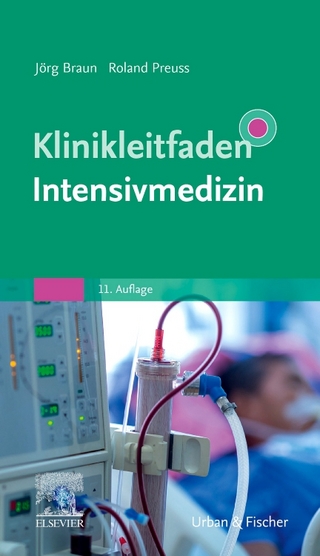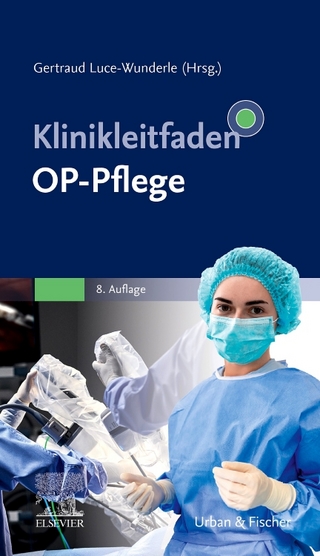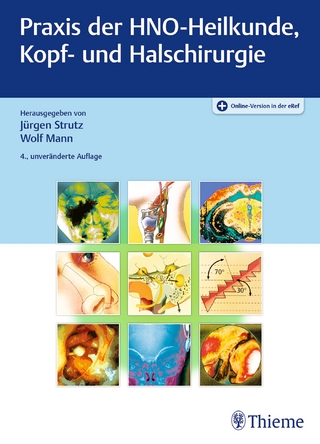
Methods of Cancer Diagnosis, Therapy and Prognosis
Springer (Verlag)
978-90-481-7858-2 (ISBN)
The enormity of the global healthcare costs vical. One-fifth of all cancers worldwide as a result of cancer infliction cannot be are caused by a chronic infection, for overemphasized. There are more than 100 example, human papilloma virus (HPV) types of cancers; any part of the body can causes cervical cancer and hepatitis B be affected. More than 11 million people virus (HBV) causes liver cancer. Tobacco are diagnosed with cancer every year, and use is the most common preventable cause it is estimated that there will be 16 mil- of cancer in the world. Approximately, lion new cases per year by the year 2020. 168,000 cancer deaths are expected to be In 2005, 7. 6 million people died of can- caused by tobacco use. Approximately, cer, that is, 13% of the 58 million deaths 40% of cancer could be prevented, mainly worldwide. It is estimated that 9 million by not using tobacco, having a healthy people will die from cancer worldwide in diet, being physically active, preventing 2015 and 11. 4 million will die in 2030. infections that may cause cancer, reduc- More than 70% of all cancer deaths occur ing exposure to sunlight, and avoidance of in low and middle income countries. excessive alcohol consumption and stress Five major cancer causing overall mor- (anger). A third of cancers could be cured talities per year worldwide are (WHO): if detected early and treated adequately. It is well established that scientific 1. Lung: 1.
Breast Cancer: An Introduction.- Breast Cancer: Computer-Aided Detection.- Sebaceous Carcinoma of the Breast: Clinicopathologic Features.- Breast Cancer: Detection by In-Vivo Imaging of Angiogenesis.- Breast and Prostate Biopsies: Use of Optimized High-Throughput MicroRNA Expression for Diagnosis (Methodology).- Familial Breast Cancer: Detection of Prevalent High-Risk Epithelial Lesions.- Differentiation Between Benign and Malignant Papillary Lesions of Breast: Excisional Biopsy or Stereotactic Vacuum-Assisted Biopsy (Methodology).- Multicentric Breast Cancer: Sentinel Node Biopsy as a Diagnostic Tool.- Breast Cancer Recurrence: Role of Serum Tumor Markers CEA and CA 15-3.- Breast Cancer Patients Before, During or After Treatment: Circulating Tumor Cells in Peripheral Blood Detected by Multigene Real-Time Reverse Transcriptase-Polymerase Chain Reaction.- Breast Cancer Patients: Diagnostic Epigenetic Markers in Blood.- Breast Cancer Patients: Detection of Circulating Cancer Cell-Related mRNA Markers with Membrane Array Method.- Prediction of Metastasis and Recurrence of Breast Carcinoma: Detection of Survivin-Expressing Circulating Cancer Cells.- Node-Negative Breast Cancer: Predictive and Prognostic Value of Peripheral Blood Cytokeratin-19 mRNA-Positive Cells.- Breast and Colon Carcinomas: Detection with Plasma CRIPTO-1.- Breast Cancer Risk in Women with Abnormal Cytology in Nipple Aspirate Fluid.- Tissue Microarrays: Construction and Utilization for Biomarker Studies.- Systematic Validation of Breast Cancer Biomarkers Using Tissue Microarrays: From Construction to Image Analysis.- Phyllodes Tumors of the Breast: The Role of Immunohistochemistry in Diagnosis.- Phyllodes Tumor of the Breast: Prognostic Assessment Using Immunohistochemistry.- Metaplastic Breast Carcinoma:Detection Using Histology and Immunohistochemistry.- Invasive Breast Cancer: Overexpression of HER-2 Determined by Immunohistochemistry and Multiplex Ligation-Dependent Probe Amplification.- Operable Breast Cancer: Neoadjuvant Treatment (Methodology).- Chemotherapy for Breast Cancer.- Locally Advanced Breast Cancer: Role of Chemotherapy in Improving Prognosis.- Relevance of Dose-Intensity for Adjuvant Treatment of Breast Cancer.- Advanced Breast Cancer: Treatment with Docetaxel/Epirubicin.- Systemic Therapy for Breast Cancer: Using Toxicity Data to Inform Decisions.- Chemotherapy for Metastatic Breast Cancer Patients Who Received Adjuvant Anthracyclines (An Overview).- Estrogen Receptor-Negative and HER-2/neu-Positive Locally Advanced Breast Carcinoma: Therapy with Paclitaxel and Granulocyte-Colony Stimulating Factor.- Breast Cancer: Side Effects of Tamoxifen and Anastrozole.- Breast Cancer: Expression of HER-2 and Epidermal Growth Factor Receptor as Clinical Markers for Response to Targeted Therapy.- Young Breast Cancer Patients Undergoing Breast-Conserving Therapy: Role of BRCA1 and BRCA2.- Radiation Therapy for Older Women with Early Breast Cancer.- Acute Side Effects of Radiotherapy in Breast Cancer Patients: Role of DNA-Repair and Cell Cycle Control Genes.- 18F-Fluorodeoxyglucose/Positron Emission Tomography in Primary Breast Cancer: Factors Responsible for False-Negative Results.- Sentinel Lymph Node Surgery During Prophylactic Mastectomy (Methodology).- Breast Conservation Surgery: Methods.- Lymph Node-Negative Breast Carcinoma: Assessment of HER-2/neu Gene Status as Prognostic Value.- Multifocal or Multicentric Breast Cancer: Understanding Its Impact on Management and Treatment Outcomes.- Are Breast Cancer Survivors at Risk for Developing Other Cancers?.- Distant Metastasis in Elderly Patients with Breast Cancer: Prognosis with Nodal Status.- Concomitant Use of Tamoxifen with Radiotherapy Enhances Subcutaneous Breast Fibrosis in Hypersensitive Patients.- Malignant Phyllodes Tumor of the Breast: Is Adjuvant Radiotherapy Necessary?.- Locally Advanced Breast Cancer: Multidrug Resistance.- Breast Cancer: Diagnosis of Recurrence Using 18 F-Fluorodeoxyglucose-Positron Emission Tomography/Computed Tomography.- Role of Sentinel Lymph Node Biopsy in Ductal Carcinoma In Situ: Diagnosis and Methodology.- Breast Conservation Treatment of Early Stage Breast Carcinoma: Risk of Cardiac Mortality.
"Once more Professor Hayat has to be congratulated for bringing together 56 leading scientists representing 16 countries in the field of breast cancer, which has made it possible to publish such an excellent book. It represents a valuable addition to the available literature on breast cancer treatment since it covers all aspects of breast cancer, including diagnosis, treatments, and prognosis. Thereby, not only efficacy of various anticancer drugs and their side-effects are pointed out, but also the necessity of age-dependent breast cancer strategies is highlighted. Therefore, I conclude that this book is a true benefit to all clinicians, surgeons, and oncologists working in the field of breast cancer."
Professor Dr. Thomas DittmerInstitute of ImmunologyWitten/Herdecke UniversityWitten, Germany
"This first volume of the Handbook on Methods of Cancer Diagnosis, Therapy, and Prognosis, concerns problems related to diagnosis, treatment, monitoring of therapy, and prognosis in breast cancer. This is an impressive monograph containing data range on novel techniques (e.g., PET examination of sentinel lymph nodes) used in early diagnosis, prognosis (Molecular studies on circulating neoplastic cells), and treatment (surgery, chemo-radio-and hormontherapy) of various histological types of breast cancer. This monograph resulting from cooperative efforts of 56 authors from 16 countries (specialists in this field) cannot be matched by any publication of this type. The oncologists, pathologists, and scientists engaged in problems of breast cancer should have this extremely valuable Handbook at hand."
Professor Piotr DziegielDepartment of Histology and EmbryologyMedical University of Wroclaw, Poland
"It has been a great pleasure to review the forthcoming book, Methods of Cancer Diagnosis, Therapy, and Prognosis: Volume 1, edited by Professor M.A. Hayat. Dr. Hayat is a Distinguished Professor in the Department of Biological Sciences, Kean University, Union, New Jersey. After seeing the chapters listed in his book, I am very impressed by the thoroughness of the topics in the proposed book. As an editor, Dr. Hayat has assembled a group of well known researchers and clinicians from many parts of the world to write the state-of-the art chapters on breast cancer, including but not limited to the chapters, on computer-assisted diagnosis, familial breast cancer, serum markers in diagnosis, circulating cancer cells before and after treatments, epigenetic markers, metastasis and its detection, validation of biomarkers, immunohistochemistry, invasive cancer and treatments. He has summarized the problems associated with the complexities of research publications which are not easy reading even for many scientists and clinicians. The subject matter is, undoubtedly, complex and formidable for many breast cancer patients.
The current consolidated information on breast cancer research is not readily available. The numbers of cancer cases are projected to increase significantly by 2030, especially in low and middle income countries. Even in the advanced countries, there is a population of low and middle income people who do not have access to appropriate diagnosis and treatment. These people suffer from the same problems as those belonging to the low and middle income countries. Dr. Hayat has provided data in his preface showing that some cancers can be reduced by changes in lifestyle and education. His assessment is very timely.
With best wishes and regards to Dr. Hayat."
Akhouri A. Sinha, Ph.D. Professor of Genetics, Cell Biology and Development, The University of Minnesota and Research Scientist at the Veterans Affairs Medical Center, Minneapolis, Minnesota.
"Professor Hayat has done it again! He has edited (METHODS OF CANCER DIAGNOSIS, THERAPY, AND PROGNOSIS, to be published by Springer) a comprehensive treatise on diagnosis, therapy, recurrence, resistance along with risk benefit ratio in cancers with special emphasis on breast cancer. Scientists and clinicians from the world over have contributed the latest advances in their respective areas of expertise. The reader is provided with a whole field view of the state of the art in breast cancer management. This treatise will serve as a must read for oncologists, scientist researchers and students of cancer biology. I look forward to the next series dealing with epidemiology, genetic predisposition and the role of the tumor microenvironment in cancer biology."
Debabrata Banerjee Ph.DAssociate ProfessorMedicine and PharmacologyCancer Institute of New Jersey, New Brunswick
| Reihe/Serie | Methods of Cancer Diagnosis, Therapy and Prognosis ; 1 |
|---|---|
| Zusatzinfo | XLVIII, 728 p. |
| Verlagsort | Dordrecht |
| Sprache | englisch |
| Maße | 193 x 260 mm |
| Themenwelt | Medizin / Pharmazie ► Medizinische Fachgebiete ► Chirurgie |
| Medizin / Pharmazie ► Medizinische Fachgebiete ► Onkologie | |
| Medizin / Pharmazie ► Medizinische Fachgebiete ► Radiologie / Bildgebende Verfahren | |
| Medizin / Pharmazie ► Pflege | |
| Medizin / Pharmazie ► Studium | |
| ISBN-10 | 90-481-7858-4 / 9048178584 |
| ISBN-13 | 978-90-481-7858-2 / 9789048178582 |
| Zustand | Neuware |
| Haben Sie eine Frage zum Produkt? |
aus dem Bereich


